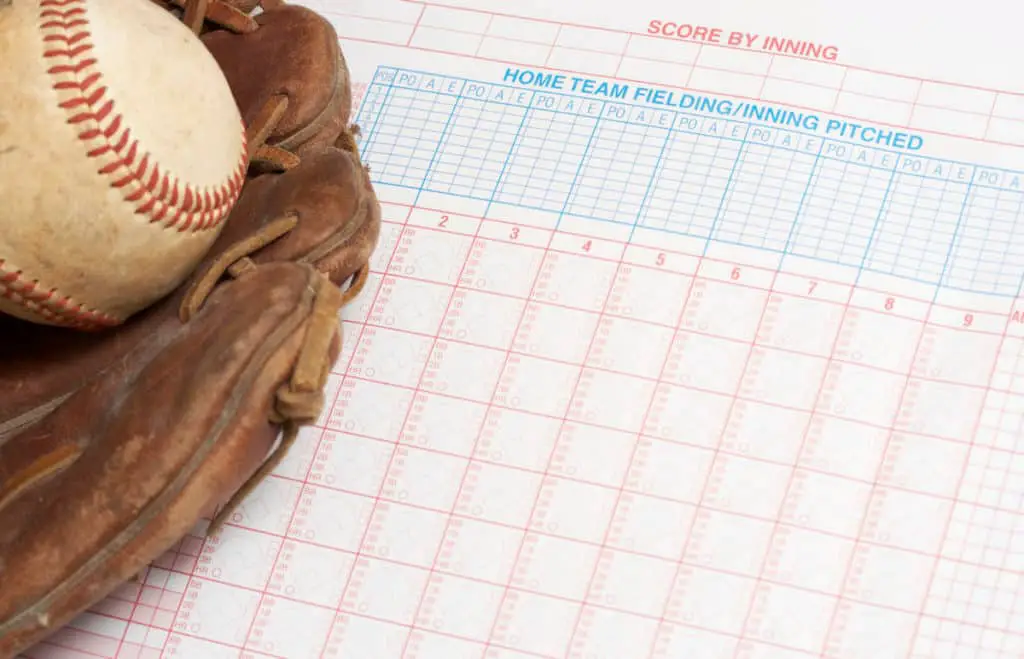Baseball is a magical sport. It signifies the beginning of spring and eventually warm summer days. Kids across the world break out their gloves, bats, and baseballs and head to practice or to the park to play. There is something invigorating and challenging about a game and there is nothing like a game that comes down to the final at bat.
The pressure is on the line and the pitcher and the hitter square off as their teams cheer them on. Baseball has created many great memories for us here at sportwarrior365 as we have played, coached, and also supported our kids in their journey with the game of baseball.
Baseball is a more slow moving game with plenty of opportunities for excitement and tension as the game progresses and it comes down to a single play in the field, a vital at bat or a missed call by an umpire. With the slower pace of the game, fans are able to appreciate the intricacies of the game and also take note of key stats as the game is going on.
Most players and fans love the stats associated with baseball. Below we will provide 7 important stats in baseball and then follow up with 3 tips to help you improve your stats or support your kids in his or her journey to improve their stats.
We love the game of baseball and continue to help kids of all ages enjoy the journey and the challenge of reaching their full potential in baseball.

Here is our list of the top 7 stats in baseball
#1 – Batting Average
Batting average might be the easiest to understand stat that is still very important in today’s game. This is the percentage of time a hitter averages a base hit. This number is expressed in a form such as .321 or .257 or .400. The higher the batting average the better. Teams want players that get base hits as often as possible.
The difficult thing about batting average in baseball is that .300 is considered an excellent average at the major league level. Batting average is calculated by taking the total number of hits and diving that number by total number of at bast. Walks, sacrifices and hit by pitch do not count as at bats.

Below is a chart to show the calculation of batting average:
| At Bats | Hits | Batting Average |
| 40 | 20 | .500 |
| 40 | 10 | .250 |
| 300 | 100 | .333 |
| 1000 | 400 | .400 |
| 800 | 424 | .530 |
Many people might ask what a good batting average is. At the major league level .300 is good, when a hitter approaches .333 they are very good and when a hitter starts to approach .400 it is almost unheard of.
The best hitters in baseball will typically average between .330 and .370.
Below is a chart to show somehow we would rate different batting averages at different levels.
| Batting Average | MLB Rating | High School Rating |
| .200 | Poor | Poor |
| .250 | Average | Poor |
| .300 | Good | Average |
| .350 | Excellent | Good |
| .400 | Amazing | Very Good |
| .500 | Unheard of | Excellent |
| .600 | Unheard of | Amazing |
#2 – Home Runs
Everyone loves the home run ball. It is a game changer and provides a great deal of excitement. When at a major league game, many of us love to see the home run hit and the action and excitement that it brings to the ballpark.
The home run has increased in frequency over the years at the major league level and it occurs less frequently at the high school and little league levels. At the major league level 40 or more homes is an excellent season with an average number taking place between 15-20.
Here is a break down of the number of home runs and the ratings associated with each level.
| # of Home Runs | Rating |
| 10 or less | Below Average |
| 20 | Average |
| 30 | Good |
| 40 | Excellent |
| 50 or more | Amazing |
For a career the best of all time can hit somewhere between 500 and 600 home runs in a career. There have been three players to ever break the 700 number and those include Barry Bonds, Hank Aaron and Babe Ruth, while six other players have hit between 600 and 699 home runs in their careers.
They include: Alex Rodriguez, Willie Mays, Albert Pujols, Ken Griffey Jr., Jim Thome and Sammy Sosa. At the high school and little league levels home runs occur much less infrequently. In a 30 game season, 5 home runs is something special.
#3 – Earned Run Average (ERA)
Earned Run Average or ERA is a stat used in baseball for pitchers. It represents the number of runs a pitcher would give up over a 9 inning game. For example, the number would be displayed as 3.36 or 4.50.
This is how many runs, if the pitcher pitched 9 innings how many runs they are averaging giving up.
To calculate ERA you take the total number of Earned Runs given up and divide by the total numbers of innings pitched and then calculate that number by 9. Here is a chart below to show some examples.
| Earned Runs Given Up | Total Number of Innings Pitched | Earned Run Average (ERA) |
| 30 | 90 | 3.00 |
| 40 | 125 | 2.88 |
| 22 | 100 | 1.98 |
| 42 | 300 | 1.26. |
| 100 | 220 | 4.09 |
At the high school level you would take Earned Runs Given Up and divide that number by total number of innings pitched and then multiple by 7, since high school games are typically played for 7 innings.
The best pitchers in the major leagues have ERA’s under 3.00. The average pitcher will be in the 3.5-5.5 range and the poor pitcher has an ERA over 5.50.
Many of the best ERA’s are typically held by the closer of the team as they often have dominant pitches and only pitch for 1 inning at a time on many of their appearances.
#4 – Runs Batted In (RBI)
Another easy to understand stat in baseball is Runs Batted In (RBI). This is the number of runs a hitter brings during his at bat. For example, if there are runners on 2nd and 3rd and the hitter hits a single and both runners are able to score that is 2 RBIs.
Another example is a grand slam. Which is when there is a runner on every base and the hitter hits a home run. All 3 runs, plus the hitter himself scored so this counts as 4 RBIs.
Another way to have a run batted in is if the bases are loaded and you get hit by a pitch or you walk. Someone scores as a result of your at bat, this could also be considered an RBI.
Over the course of a major league season, the league leaders in RBI’s will break the 100 mark and sometimes exceed 130 or greater for total RBIs in a season.
There are many opportunities that impact a hitters’ RBI totals, including the hitter hitting in front of him and the number of opportunities that he has over the season.
The higher your batting average and the higher the power numbers, typically the higher the Runs Batted In, unless the players in front of you are struggling.
RBIs and Rating
| # of RBIs | Rating |
| 40 | Poor |
| 50-60 | Average |
| 60-80 | Above Average |
| 80-100 | Good |
| 100-120 | Very Good |
| 120 or more | Excellent |
#5 Saves
Another key pitching stat, but much more so for a bullpen pitcher is saves. The closer of a baseball team is expected to get the last three outs of the game in close games.
For example, a pitcher earns a save when he enters the game in the 9th inning and pitchers to 3 hitters when his team is leading by 3 runs or less.
A pitcher would also pitch the last three innings of game regardless of score and earn a save or one last option is if he faces the winning or tying run at the plate or is on deck regardless of the number of innings pitched.
There have been some amazing closers in the game of baseball that have been absolute shut down closwers who sometimes pitch the 8th and 9th innings in close ball games.
There is nothing worse than losing a game when you have led for the majority of the game only to have a blown save in the 9th inning.
Top 5 All Time Leaders in Saves – MLB
| Pitcher | Number of Saves |
| Mariano Rivera | 652 |
| Trevor Hoffman | 601 |
| Less Sith | 478 |
| Frencisco Rodriguez | 437 |
| John Franco | 424 |
#6 – On Base Percentage (OBP)
On Base Percentage of OBP represents the percentage of time a player reaches base. This includes hits, hit by pitches, or walks and is divided by total at bats (hits, walks, outs, sacrifices, hit by pitch).
The number is frequently represented in a format such as .524 or .468. The higher the OBP the greater advantage for that team. Teams seek players who have a combination of reaching base and also hitting for some power.
The movie MoneyBall, which brought a greater appreciation of the stats in baseball and the analytics behind the game put a lot of emphasis around On Base Percentage. The goal was to have a lower strikeout ratio and a high OBP which would put more pressure on the pitcher and defense and results in more runs scores.
The movie showed a great comparison between the old school approach to the game which often relied on the “eye test” of a player compared to using a spreadsheet to make baseball decisions.
For a complete breakdown on OBP, visit here.
Another key stat connected with On Base Percentage is OPS. To read more about OPS, visit here.
#7 – Total Bases
This is another great stat as it represents the total number of bases that a hitter earns over the course of a season as a result of their hits. For example a single would count as 1, a double =’s 2, triple =’s 3, home run =’s 4.
These numbers then are added up for the total number of bases over a season. Obviously the higher the power numbers, typically the more total bases earned.
Here are the top 5 all time in MLB history for Total Bases:
| Players | Total Bases |
| Hank Aaron | 6,856 |
| Stan Musial | 6,134 |
| Willie Mays | 6,066 |
| Barry Bonds | 5,976 |
| Albert Pujols | 5,863 |
Overall the stats in baseball are fun to watch throughout a season and a good measurement for how you are playing or the players on your team. Batting average is easy to understand as well as home runs, and runs batted in.
ERA gives a good measuring stick for each pitcher, although it can be impacted by if a pitcher is a starting pitcher or a relief pitcher. Starting pitchers are expected to pitch more innings, which can make it more difficult to maintain a quality ERA because it only takes one bad inning to ruin a good ERA, especially early in the season.
Below are three tips to help you improve your stats. We will provide two tips for hitters and one tip for those pitchers out there.
Hitting for A High Batting Average:
3 Tips to Hit More Home Runs
4 Pitching Strategies
Related Questions – Stats in Baseball
Most important stats in baseball?
The two most traditional states in baseball that are still respected by most are batting average and Earned Run Average. The batting average is easy to understand and most people know what a quality ERA is. Most recently the sabermetrics people have taken over and have started to dive into WHIP, WAR, OPS and other new stats that are used by the analytics people involved in the game.
Every major league utilizes analytics at different levels for in game changes, roster compositions and other major decisions that are made to try to help players reach their peak performance and for the team to win as many games as possible.
Are stats as important in other sports?
We are witnessing other sports to follow the path of baseball and utilize stats to help make key decisions. Basketball teams are definitely onboard and have been analyzing data for years now in making decisions on lineups and drafting players.
Coaches and analytics departments are using analytics to help players with shot selection and for lineups that match the best. The analytics behind the 3 point shot have changed the game forever. We know that the 3 point shot is a better shot than the 20 foot shot.
That is why we see many shots right at the hoop and from behind the 3 point arc. Why take a 20 footer when the 3 point shot has a similar shooting percentage and is worth an extra point? Teams and players have adjusted to this wisdom.
This has impacted the training of players and the high school game as well. Many of the best players can all slash to the hoop or hit the long distance 3 pointer. This change in the game has brought a fast paced, high octane game to many levels of the game.
More and more NFL football teams are using analytics to help make decisions on draft selections and in game decisions. For example, whether to go for it on 4th down or to punt is often now rooted in analytics.
There are people that argue for the old fashion football general manager and those that desire to have a general manager and can utilize analytics into the equation on who to select for the team. It will be interesting to follow in the upcoming decade and see what path the majority of NFL teams go.
Take Action…
Make sure you check out the videos above and continue to learn more about the game as a student or as a coach. The great thing about baseball is that we are constantly learning about the game.
There is always something new to learn or a new perspective to consider. The true all time great baseball coaches whether at a Major League, College or High School Level all love to talk about the game all the time and break down the decisions by players and managers.
They can talk hitting for months at a time or look at the strategy that a pitcher was using in his approach. The point being is to surround yourself with other baseball people if you truly love the game and want to improve.
Baseball is a thinking person’s game and can leave you scratching your head at times, but the great thing is there is typically a game the next day to redeem yourself or to challenge yourself to stay on a hot streak.
Stay with the game and learn to love the challenge of the daily journey that we are all on with baseball.
